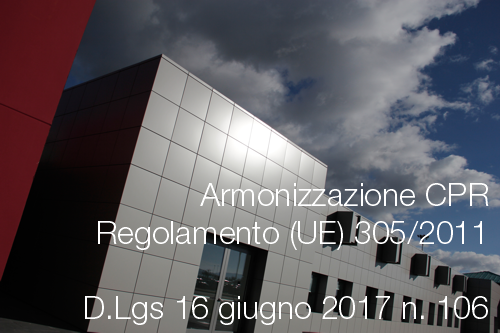Direttiva 2011/100/UE
Direttiva 2011/100/UE della Commissione, del 20 dicembre 2011, che modifica la direttiva 98/79/CE del Parlamento europeo e del Consiglio relativa ai dispositivi medico-diagnostici...
ID 7639 | 27.01.2019
Il Documento allegato intende fornire note e spunto normativo sul concetto di "usabilità" dei Dispositivi medici come definito da EN 60601-1-6. Allegati altri documenti d'interesse.
Usability: Con questo termine – spesso tradotto in italiano con la locuzione “facilità d’uso” – si intende quella dimensione del prodotto/servizio connessa all’interazione che si stabilisce tra utilizzatore, prodotto e contesto d’uso, la cui criticità dipende dallo sforzo richiesto all’utente nell’ambito del processo d’uso. Un prodotto usabile ha le seguenti caratteristiche:
- è facile da imparare ed è altrettanto facile ricordare come si utilizza;
- è efficace ed efficiente nel suo uso;
- permette di recuperare velocemente gli errori fatti nel suo uso;
- è piacevole da utilizzare.
Ad oggi la tematica dell’usabilità sta assumendo sempre più rilevanza in ambito europeo e, conseguentemente, anche in Italia, da cui ne deriva la necessità che le apparecchiature siano sottoposte a test di “ingegneria dell’usabilità” che ne verifichino la facilità e la sicurezza di utilizzo.
Anche per quanto riguarda i dispositivi medici (DM) è raccomandata l’esecuzione di preventive specifiche prove volte ad evitare eventi avversi connessi ad un impiego non “user-friendly”, per cui vengono prese in esame le attuali disposizioni legislative e raccomandazioni inerenti i DM ed i possibili connessi scenari di responsabilità in caso di danno. In particolare gli Autori analizzano gli scenari di contenzioso derivanti da un uso non sicuro dei DM: dall’ipotesi di “premigenia” responsabilità del Ministero della Salute per omessa vigilanza alla responsabilità del professionista sanitario e del medico da mancata segnalazione di un difetto a carico delle apparecchiature mediche utilizzate, sino a quella organizzativa della struttura sanitaria cui viene richiesto sempre più, nella quotidiana pratica operativa, di adeguarsi a protocolli e raccomandazioni internazionali.
Nel caso dei DM, quindi, non è remota l’evenienza secondo cui in caso di danno da “mal-usabilità” potrà essere richiesto alla struttura sanitaria di fornire prova di essersi dotata di dispositivi sicuri e rispondenti alle raccomandazioni più attuali in tema di usabilità.
Documento completo in allegato
______
A seguire sono riportate le norme tecniche d'interesse, riguardanti l'ergonomia e l'usabilità dei dispositivi medici:
- ISO/IEC GUIDE 71, Guidelines for standards developers to address the needs of older persons and person with disabilities; (Allegata)
- ISO/TR 22411, Ergonomics data and guidelines for the application of ISO/IEC Guide 71 to products and services to address the needs of older persons and persons with disabilities;
- ISO 20282-1, Usability of everyday products - Part 1: Universal design and the evaluation of ease -of-operation, efficiency and satisfaction
- ISO/TS 20282-2, Usability of consumer products and products for public use - Part 2: Summative test method
- ISO/TR 16982, Ergonomics of human system interaction - Usability methods supporting human centered design
- IEC 62366, Application of usability engineering to medical devices; (CEI EN 62366-1)
- IEC 60601-1-6, General requirements for basic safety and essential performance; (CEI EN 60601-1-6)
- EN ISO 14155, Clinical investigation of medical devices for human subjects
- IEC/TR 61258, Guidelines for the development and use of medical electrical equipment educational materials.
- ISO/IEC TR 25060:2010 - Systems and software engineering - Systems and software product Quality Requirements and Evaluation (SQuaRE) - Common Industry Format (CIF) for usability: General framework for usability-related information
Allegati altri Documenti d'interesse sulla usabilità dei MD:
- Linee guida usabilità DM FDA 2016
- Usabilità dispositivi medici - CCIA PD 2011
- Sviluppo metodologia valutazione delle tecnologie sicurezza pazienti - MIn Salute 2011
- ISO IEC Guide 71 2014 Guide addressing accessibility in standards - ISO 2014
- Raccomandazione n. 9 - Raccomandazione per la prevenzione degli eventi avversi conseguenti al malfunzionamento dei dispositivi medici/apparecchi elettromedicali - Min. Salute 2009
- Procedura implementazione Raccomandazione n. 9 aprile 2009 - AOL Federico II 2015
- Aspetti normativi e medico-legali usabilita DM - Bonelli, De Luca 2014
Il Ministero della Salute, Direzione generale della programmazione sanitaria, ha elaborato, in collaborazione con esperti di Regioni e Province Autonome e altri stakeholder, le raccomandazioni elencate di seguito, ossia documenti specifici con l’obiettivo di offrire strumenti in grado di prevenire gli eventi avversi, promuovere l’assunzione di responsabilità e favorire il cambiamento di sistema.
Le raccomandazioni sono oggetto di revisione ed aggiornamento da parte dell’Ufficio 3 - Direzione generale della programmazione sanitaria, in collaborazione con Regioni e Province Autonome, Agenas, AIFA, ISS,Coordinamento delle Regioni e Province Autonome per la Sicurezza delle Cure – Sub Area Rischio Clinico, Società scientifiche e altri stakeholder.
Ultimo aggiornamento 13 dicembre 2018
Variata da:
Certifico Srl - IT | Rev. 00 2019
©Copia Autorizzata Abbonati
Collegati
Direttiva 2011/100/UE della Commissione, del 20 dicembre 2011, che modifica la direttiva 98/79/CE del Parlamento europeo e del Consiglio relativa ai dispositivi medico-diagnostici...
Guida Direttiva Prodotti da Costruzione - CPD
1. Guidance Paper A - The designation of Approved Bodies in the field of the Construction Products Di...

ID 4316 | Update news 04.05.2023
Decreto Legislativo 16 giugno 2017 n. 106
Adeguamento della normativa n...
Testata editoriale iscritta al n. 22/2024 del registro periodici della cancelleria del Tribunale di Perugia in data 19.11.2024